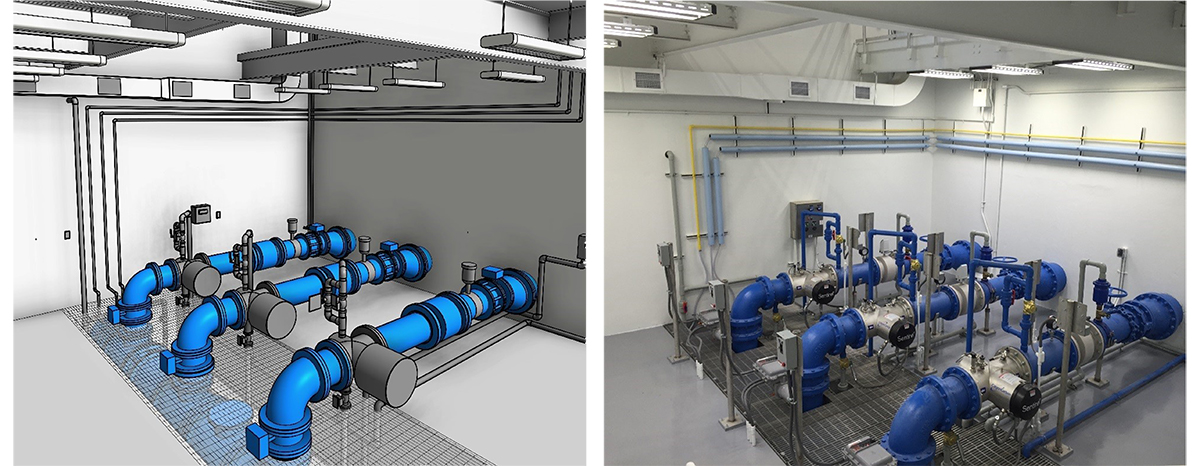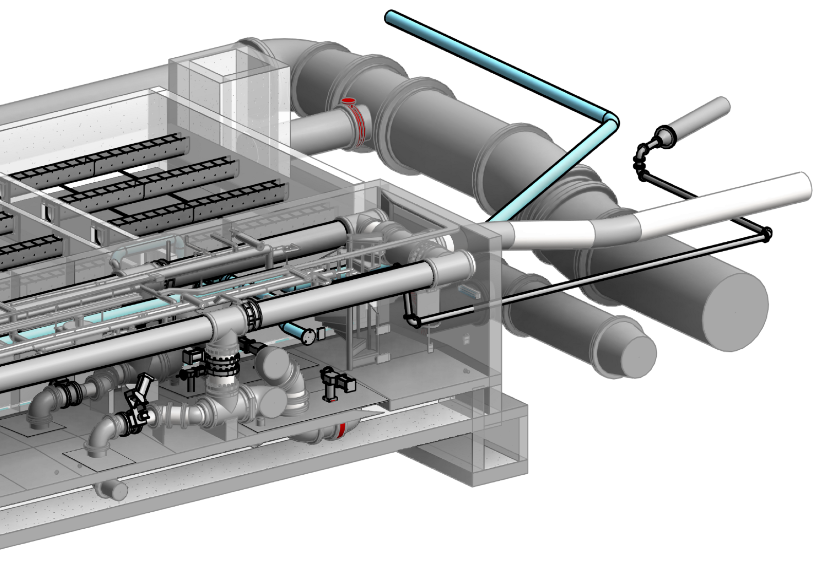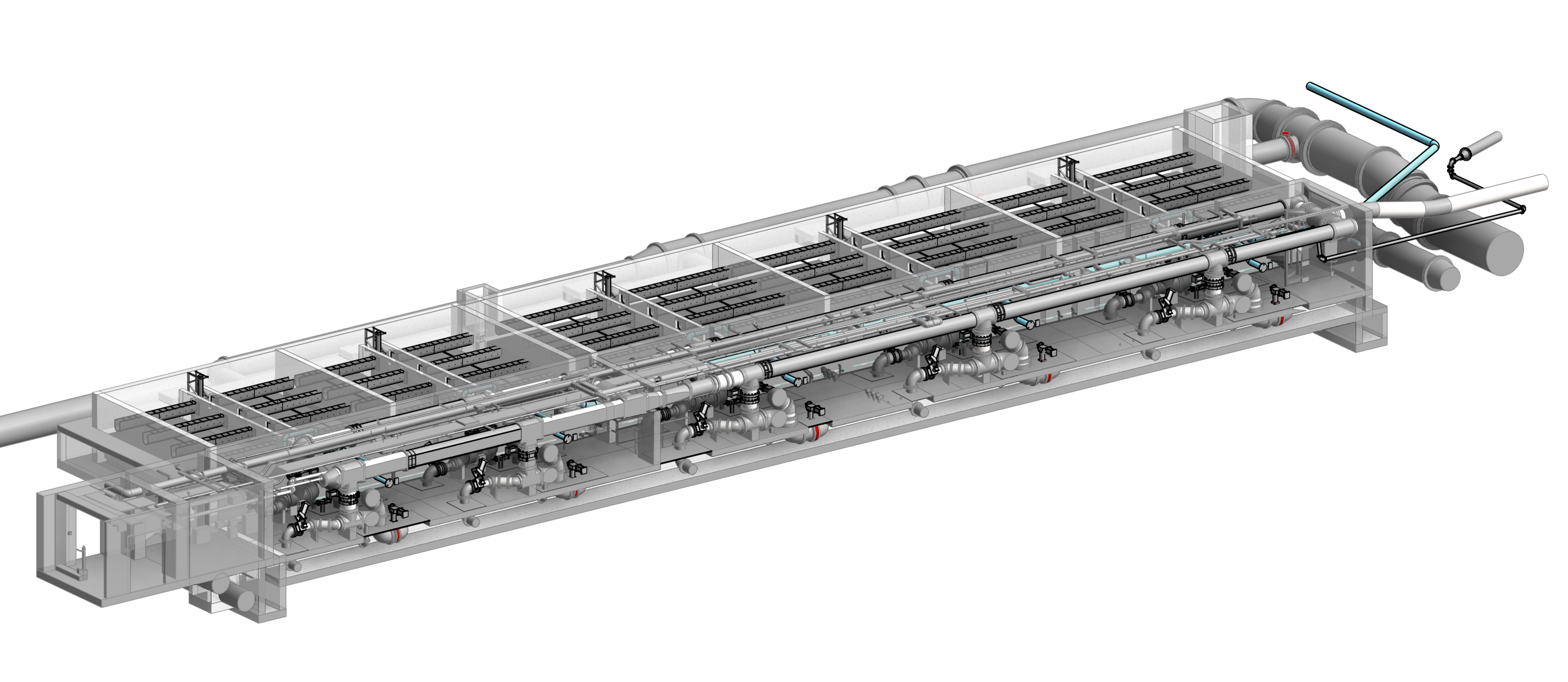The Basics of BIM
Posted June 13, 2018
Ask anyone in architecture, engineering and construction to name the biggest technological disrupter in the industry, and BIM is likely to top the list. By now most people have heard of BIM in one context or another, but even so, it can be a bit tricky to define and explain.
What is BIM?
BIM, an acronym for Building Information Modeling, is a term that refers to a software-based, collaborative method for working on a project. BIM is not a single piece of software, rather it can be thought of as a comprehensive digital database that incorporates all project characteristics into a workable 3D model. In a BIM environment, different disciplines can easily share individual data models among each other, ensuring the entire design team is working with accurate information.
The Basics of BIM
As design work has moved from 2D CAD drafting to 3D modeling, teams have a need to share data electronically with other disciplines. In building information modeling, this information is exchanged via a common data environment (CDE), which acts as the central repository for project documentation. Disciplines share data via the CDE, allowing other users to access the data—either by using the file directly or converting it—to make informed decisions using the latest information. 3D models shared via the CDE can be combined to create what is known as a federated model, a composite formed by linking individual models with each other. The ideal BIM environment, however, consists of all disciplines working on a single integrated model that contains all the physical and functional characteristics. Changes are shown in real time, ensuring the team is always using the latest data.
 |
|
| Visualization | Reality |
Projects enriched with BIM generally begin with the creation of a BIM Execution Plan (BEP). A BIM Coordinator (i.e., the person(s) responsible for managing the interrelationships of individual models and the ownership of model elements) will develop and enforce the BEP, outlining the proper sequence of model development as well as file formats and software to facilitate information exchange.
The Benefits of BIM
Parametric Objects
BIM differs from typical design/drafting practice in that it builds 3D models out of objects rather than lines. These objects are defined by their own values and characteristics as well as their relationships with other objects. In practice, these “parametric objects” are defined once then used throughout a model, so a change to its parameters is automatically reflected wherever it shows up. Multiple iterations of a concept can be quickly developed and presented as a result. This feature not only simplifies the design process but also aids in preventing discrepancies.
Clash Detection
Imagine stacking transparencies on a worn overhead projector in a high school classroom. Each thin acetate film represents a piece of a multifaceted construction project. One sheet displays all the water pipes in the building, another shows electrical wires, a third highlights every structural beam, and so on. Piled high on the illuminated slide, a lens shines an image of a new gymnasium on the projection screen. It looks nearly finished, but something seems off. You notice the beams on one slide are jutting through the water pipes on another, and there is not enough space available to fit a portion of electrical wiring.
These clashes, also commonly called conflicts, have a big impact. You now need a whole new set of plans—and that costs money.
 |
| Conflict Avoidance |
Ideally such errors will be noticed much earlier, but clashes can go undetected when passing off documents between teams. One major benefit of BIM is that its collaborative nature makes it much easier to identify clashes between different discipline’s models almost as soon as they are updated, allowing errors to be resolved early when they have the least impact. This feature works in tandem with a model’s parametric objects, as a fix to a single error is performed automatically to all instances. In addition, clash detection systems within BIM software can be used to highlight clashes between models visually, making it even easier to review models for errors.
Multiple Dimensions
BIM is not limited to the spatial plane—it goes beyond the third dimension! BIM’s multi-dimensional design approach creates a heightened sense of awareness of all aspects of building construction. 4D models tie buildable components to construction schedules, generating simulations of construction sequencing and timetables while still designing. Access to this scheduling information early in the design process allows teams to plan accordingly and develop accurate program plans before ground is broken. 5D models factor in cost information to automatically create cost budgets and financial estimates. As changes are made to 3D and 4D data, cost calculations are updated accordingly, thereby enabling the team to closely track and more accurately predict a project’s final cost expenditures. 6D models focus on a facility’s overall life cycle and contain information that directly influences facility management such as a component’s project lifespan, decommissioning timeframes, or maintenance requirements.
Building with BIM
Construction managers can be given access to the BIM model to help them provide value engineering benefits as the design progresses. Since the integrated model can be shared using cloud software, contractors, engineers and inspectors can view plans, building models and design data out in the field from their mobile devices. They can even add photographs, barcodes, invoices and scanned PDF manuals to the model directly from a project site.
BIM in Practice
BIM can secure a place on almost any project—and for good reason. Enhanced visualization and improved conflict detection facilitate quick coordination among disciplines and rapid feedback from owners, whether it’s for the design of a small-scale structure or a complex facility. The following is a small selection of projects that owe part of their success to the value of BIM.
CHA’s resourceful design work to transform a renovated cargo hanger into a modern animal airport terminal utilized BIM technology. The work on this $65 million facility ranged from a complex air cooling and filtration system to reinforcing the building’s structure to accommodate extremely heavy animal visitors. CHA’s involvement on this project included mechanical, electrical, plumbing, fire protection, civil, and structural engineering design and construction administration.
In contrast with human-oriented buildings, CHA had to adjust typical design approaches to assure the safety and comfort of all four-legged and winged passengers. Reliable ventilation and electrical systems are an obvious necessity no matter the patron, but their importance bears a whole new magnitude for animals. BIM was pivotal in producing a well-vetted design. By far the biggest benefit was the technology’s much improved interdisciplinary conflict detection and resolution. By running the clash detection software, a resident coordinator could quickly identify interdisciplinary clashes and notify the lead engineer of the discipline, who would run the design through a clash resolution exercise.
The BIM-generated model also provided a robust visual for the owner and contractor, making it much easier for them to provide feedback on the location of items and the overall look of the facility. During review meetings, the team could open a unified model made in Autodesk Revit and use cameras to look throughout the facility. If the client and contractor had specific questions, such as concerns regarding the routing of air conditioning duct or placement of electrical panels, they could easily look inside any room to visualize how the components fit together and determine the best installation methods.
 |
| Isometric View of Overall Pipe |
Unlike 2-D plans, BIM-generated models display graphical representation and technical data in an unambiguous and approachable manner. Often 2-D plans can be difficult to effectively interpret, asking owners and clients to visualize the full scope of a project and discern incremental details from a single printed perspective. On a recent disinfection project utilizing closed vessel UV reactors, BIM modeling was vital to helping the owner better understand the final product. Using 3-D images generated from the BIM model, the owner was able to visualize the work being done and also understand how the operator would interact with the equipment. In turn, he was better prepared to ask for specific changes or request clarification based on the model.
Not all projects are easily assembled. One such project involved the installation of new valves and piping in an area notorious for piping conflicts: a filter pipe gallery. Carefully tracing this tangled pipework can be daunting challenging; however, BIM simplified the process. CHA utilized a 3-D laser scan of the pipe gallery and then created a 3-D model from the scan. With the 3-D model in place, the project team laid out the new piping and valves, knowing with a high degree of certainty that conflicts were being avoided. The nature of the scan and model allowed the team to accurately dimension and locate new piping and valves to maintain proper clearances for items such as flanges, actuators and fittings.
Bringing it all Together
With the ability to share and manipulate every project aspect across multiple disciplines in a single location, BIM radically changes the way projects get built. From a proposal standpoint, GIS, CAD, BIM and other technologies can be used to create and visualize data rich models to provide context for designs in hours as opposed to weeks. Access to a comprehensive central project database not only enables the efficient production and iteration of accurate and realistic design proposals, but also allows teams to explore project alternatives before a proposal is even submitted.
Moving forward, these models can be shared anytime and anywhere to increase project understanding thereby reducing costs related to changes that may not have been realized until much later in the design process. Combined with burgeoning virtual reality (VR) and augmented reality (AR) technologies, designers, clients and owners can even navigate a fully functional virtual representation of their completed facility from the comfort of home!
BIM’s impact on the AEC industry and its possible impacts on project delivery is just beginning to be realized. Clearly BIM is here to stay.